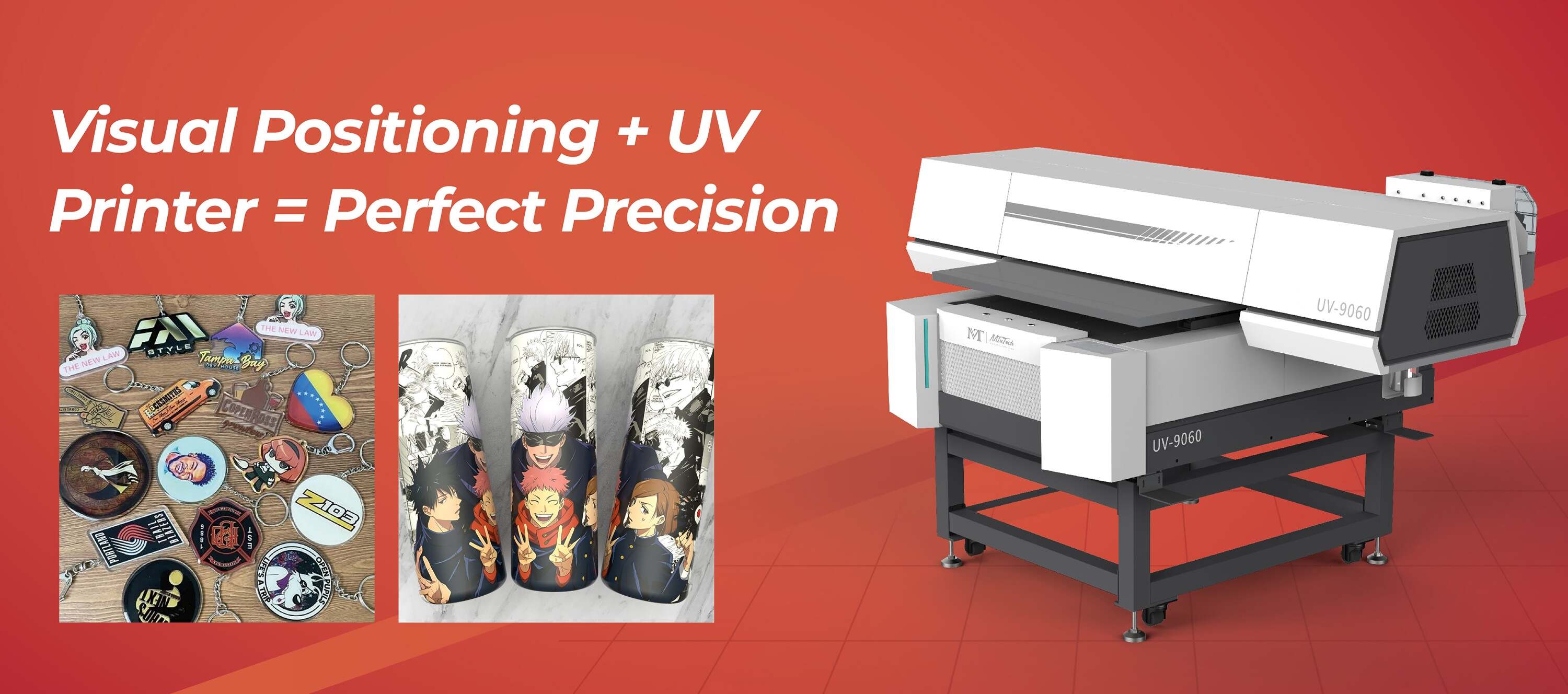How Visual Sensors Are Calibrated in UV Printers
Introduction
In the realm of modern printing technology, UV printers have emerged as a game-changer, particularly in sectors that require precision and quality. Central to achieving this precision is the calibration of visual sensors in these printers. This blog post delves into how visual sensors are calibrated in UV printers and why this calibration is crucial for producing high-quality prints.
Understanding Visual Sensors in UV Printers
Visual sensors in UV printers serve a vital role in ensuring alignment, registration, and print quality. These sensors are capable of recognizing specific patterns and colors, which helps the printer maintain accuracy throughout the printing process. Let's explore the types and functions of visual sensors typically used in UV printing.
Types of Visual Sensors
·
Camera Sensors: High-resolution cameras capture images of the printed surface to assess quality and alignment.
·
·
Optical Sensors: These sensors identify color and light variations, making them essential for color calibration.
·
·
Positioning Sensors: Used to determine the position of the substrate, ensuring that printed designs are aligned perfectly.
·
Functions of Visual Sensors
The primary functions of visual sensors in UV printers include:
·
Real-Time Monitoring: Continuous assessment of the printing process to detect errors instantly.
·
·
Color Matching: Ensuring that the printed colors match the digital file accurately.
·
·
Substrate Detection: Identifying the type and orientation of the material being printed on.
·
The Importance of Sensor Calibration
Calibration is essential for ensuring that visual sensors operate at their optimum level. Properly calibrated sensors enhance the overall performance of UV printers. Here’s why calibration is important:
·
Consistency: Calibration ensures that each print produced is uniform in quality and appearance, leading to higher customer satisfaction.
·
·
Accuracy: Well-calibrated sensors minimize the risk of misalignment and color discrepancies, ensuring designs are printed as intended.
·
·
Efficiency: Reduces the need for reprints, saving time and materials, which is particularly important in high-volume settings.
·
Steps to Calibrate Visual Sensors in UV Printers
Calibrating visual sensors in UV printers involves several precise steps. Below, we outline the general calibration process.
1. Initial Setup
Before starting the calibration process, ensure that the printer is in a controlled environment. Factors such as temperature, humidity, and lighting can affect sensor performance.
2. Using Calibration Targets
Calibration targets are reference images with specific color patterns and alignments. To begin, print the calibration target on the same substrate that will be used for production. This step is crucial for maintaining accuracy since different materials can impact the visual output.
3. Adjusting Camera Settings
Once the calibration target is printed, adjust the camera settings for optimal focus, brightness, and contrast. Use specialized software to receive real-time feedback on adjustments. This software often provides a way to visualize adjustments in color and alignment instantly.
4. Alignment Calibration
Run a series of tests to measure alignment by comparing the printed calibration target to its digital counterpart. Adjustments may include modifying printer settings or even repositioning or realigning the visual sensors.
5. Color Calibration
Next, focus on color calibration. Use color measurement tools, such as spectrophotometers, to assess the printed colors against predefined standards. Adjust the printer's color profiles based on these measurements to ensure accurate color reproduction.
6. Final Testing and Validation
Conduct several test prints after calibration adjustments to validate that both alignment and colors meet the required standards. Reassess and make additional adjustments when necessary.
Challenges in Sensor Calibration
While calibrating visual sensors in UV printers is crucial, it can also present unique challenges. Some common issues include:
·
Environmental Variability: Changes in lighting conditions can affect sensor performance.
·
·
Material Variations: Different substrates can alter color perception and alignment.
·
·
Software Compatibility: Ineffective or outdated software can complicate the calibration process.
·
Best Practices for Sensor Calibration
To ensure a consistent and effective calibration process, consider the following best practices:
·
Regular Checks: Schedule regular calibration checks and maintenance to keep sensors operating optimally.
·
·
Training: Train staff on the calibration process to reduce errors and improve efficiency.
·
·
Documentation: Maintain thorough records of calibration settings and adjustments for future reference and troubleshooting.
·
Conclusion
Calibrating visual sensors in UV printers is essential for achieving high-quality prints, maintaining consistency, accuracy, and efficiency in the printing process. By following proper calibration procedures and best practices, businesses can enhance their printing capabilities and satisfy customer demands. For those seeking advanced technology in visual positioning, explore our high-quality Visual Positioning UV printers here.
FAQ
What are the signs that a visual sensor needs calibration?
Common signs include inconsistencies in print quality, misalignment of printed images, and noticeable color discrepancies compared to digital proofs.
How often should visual sensors be calibrated?
Calibration frequency depends on usage and environmental factors, but it is advisable to check sensors at least quarterly or before large production runs.
Can I calibrate my UV printer sensors myself?
Yes, many printers come with calibration software and guidelines. However, for optimal results, especially in professional settings, consulting a technician is recommended.
What types of substrates are best for UV printing?
UV printers can print on a wide range of substrates, including paper, plastic, metal, and glass. Each substrate may require specific calibration adjustments.
What tools are best for calibrating visual sensors?
Tools such as spectrophotometers for color measurement and specialized software for camera adjustments are essential for effective calibration.

